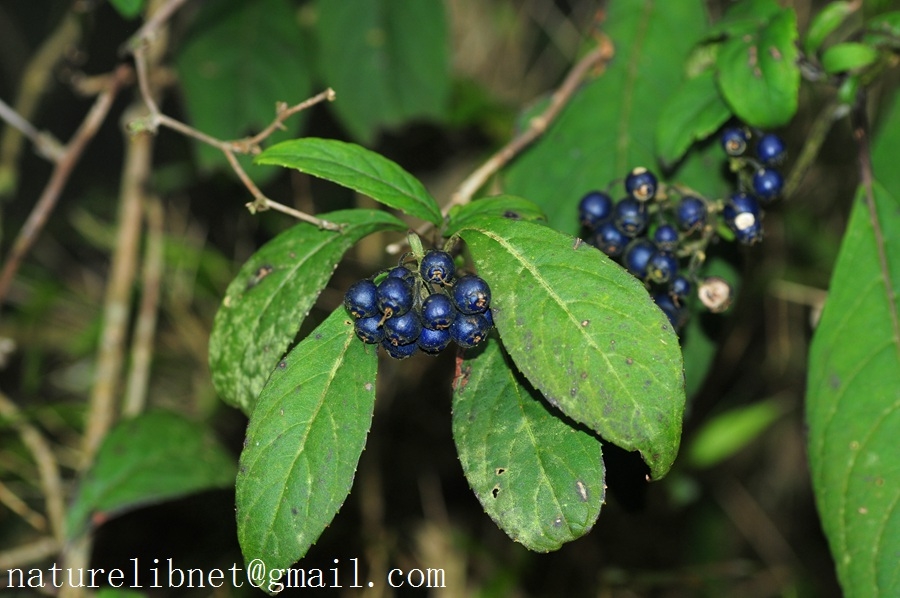- Scientific Name: Hydrangea febrifuga (Lour.) Y.De Smet & Granados
- Ref: Taxon 64:750. 2015
- Synonym: Dichroa febrifuga Lour.
- Chinese Common Name: 常山 chángshān
- Japanese Common Name: ジョウザン [常山] jōzan
- Family: Hydrangeaceae
- Genus: Hydrangea
- Distribution: Mixed forests on mountain slopes or in valleys; 200-2000 m. Anhui, Fujian, Gansu, Guangdong, Guangxi, Guizhou, Hubei, Hunan, Jiangxi, Shaanxi, Sichuan, Taiwan, Xizang [Bhutan, Cambodia, N India, ?Indonesia, Laos, Myanmar, Nepal, Sikkim, Thailand, Vietnam].
- Photo: 02/15/2013, Conghua, Guangdong
Shrubs 1-2 m tall. Branchlets, petioles, and veins glabrous or crisped pubescent. Petiole 1.5-5 cm; leaf blade sometimes purplish abaxially, elliptic, obovate, elliptic-oblong, or lanceolate, 6-25 × 2-10 cm, papery, abaxially glabrous or crisped pubescent along veins, rarely sparsely hirsute, adaxially glabrous, secondary veins 8-10 on both sides of midvein, base cuneate, margin serrate to coarsely so, rarely undulate, apex acute to acuminate. Inflorescence a corymbose panicle, 3-20 cm. Flower buds obovoid, 6-10 mm; pedicel 3-5 mm. Calyx lobes 4-6, broadly deltoid, apex acute. Petals reflexed at maturity, blue or white, oblong-elliptic, slightly fleshy. Stamens 10-20; filaments connate when young, free at maturity, filiform; anthers ellipsoid. Ovary inferior to 3/4 so. Styles 4(-6), clavate; stigma oblong. Berry dark blue when mature, 3-7 mm in diam. Seeds ca. l mm. Fl. Feb-Apr, fr. May-Aug. (Flora of China)
